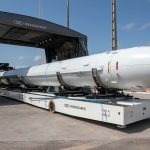November 30, 2022, 10:32 AM
November 30, 2022, 10:32 AM
The Chilean pottery from Quinchamalí and Santa Cruz de Cuca, and the ancestral knowledge system of the Colombian Arhuaco, Kankuamo, Ogui and Wiwa peoples, in the Colombian Sierra Nevada de Santa Marta, were declared by Unesco, this Tuesday 29, intangible cultural heritage of humanity.
Cultural expressions from Albania, Andorra, Cambodia, China, Croatia, Turkey, Ukraine and Vietnam They also received that distinction and protection from the United Nations Educational, Scientific and Cultural Organization (Unesco).
The inscriptions on the UNESCO heritage lists were adopted by the 17th Intergovernmental Committee for the Safeguarding of the Intangible Cultural Heritage of Humanity, meeting in this North African capital.
The artisan tradition, inherited from pre-Columbian times, It is still alive in Quinchamalí and Santa Cruz de Cuca, in the central Chilean commune of Chillán, where utilitarian pieces such as plates and cups are produced, along with decorative ones such as statues of domestic animals and figures of people.
The clay is fired so that it acquires a characteristic black color, and thin previously made incisions are then painted as lines with white earth.
The committee included that expression in the urgent safeguard list, which includes expressions that are threatened and that need assistance for their survival.
The knowledge system of the indigenous peoples of the Sierra Nevada de Santa Marta was presented as “a perfect understanding of the territory, considering the sea, rivers, stones and mountains as a living organism.”
That set of rules, guidelines and standards of care for the original maintenance of your world, according to the candidacy proposed by Colombia, It is a guide for the four original peoples to prevent the return of chaos to the universe.
Already in 1979 Unesco had declared the Sierra Nevada a biosphere reserve, of about 17,000 square kilometers and the highest coastal mountain system in the world.
From Albania he signed up for the xhubletaa handmade garment worn by women and girls from the highlands of the north of the country, characterized by its wavy bell shape, and whose use and production have been decreasing in recent decades for sociopolitical and economic reasons.
The Bear Festivities, which are held every winter in five towns in the Pyrenees, located in Andorra and France, were also recognized. During the celebration, enlivened with music, dances and speeches in Catalan, young people dress up as bears and run through the streets trying to catch the participants.
From Cambodia the Kun Lbokator was recognized, a 2,000-year-old martial art, which seeks to develop mental and physical strength and discipline among its practitioners, through self-defense techniques and a philosophy of non-violence.
The tea transformation technique in China was recognized because it deals with knowledge, skills and practices related to the management of tea plantations, the collection of leaves, their manual processing, consumption and exchange of this drink.
It was highlighted that, based on natural conditions and local customs, producers have developed six categories of tea -green, yellow, dark, white, blue and black-, as well as others to which elements such as floral aroma are added. , resulting in more than 2,000 tea products.
From Croatia the Celebrations of Saint Tryphon were inscribed, patron saint of the Croatians who inhabit the Boka Bay area and venerate that saint martyred in the 3rd century, as well as the kolo (circle dance), also on the occasion of the festivities of the patron saint, all between the months of February and March.
Another recognized art was the traditional work of the volcanic stone of Ahlat, mined by miners at the foothills of Mount Nemrud in southeastern Turkey. The knowledge, methods, skills and aesthetic understanding surrounding its extraction, scraping and carving were recognized.
Ukrainian bortsch, traditional dish served at social events, national holidays and other rites to express hospitality and inclusion. The ingredients of this beetroot soup vary depending on the region, the season, the occasion and the way it is prepared.
Finally, the pottery products of the Cham people were recognized, an ethnic minority living mainly in central Vietnam, as well as Cambodia and Thailand. They are household utensils, religious objects and works of art.
They are made by women, who, instead of using a turntable, turn the piece around themselves to give it shape. They thus have a way of socializing, increasing family income and reinforcing their role in society.


















